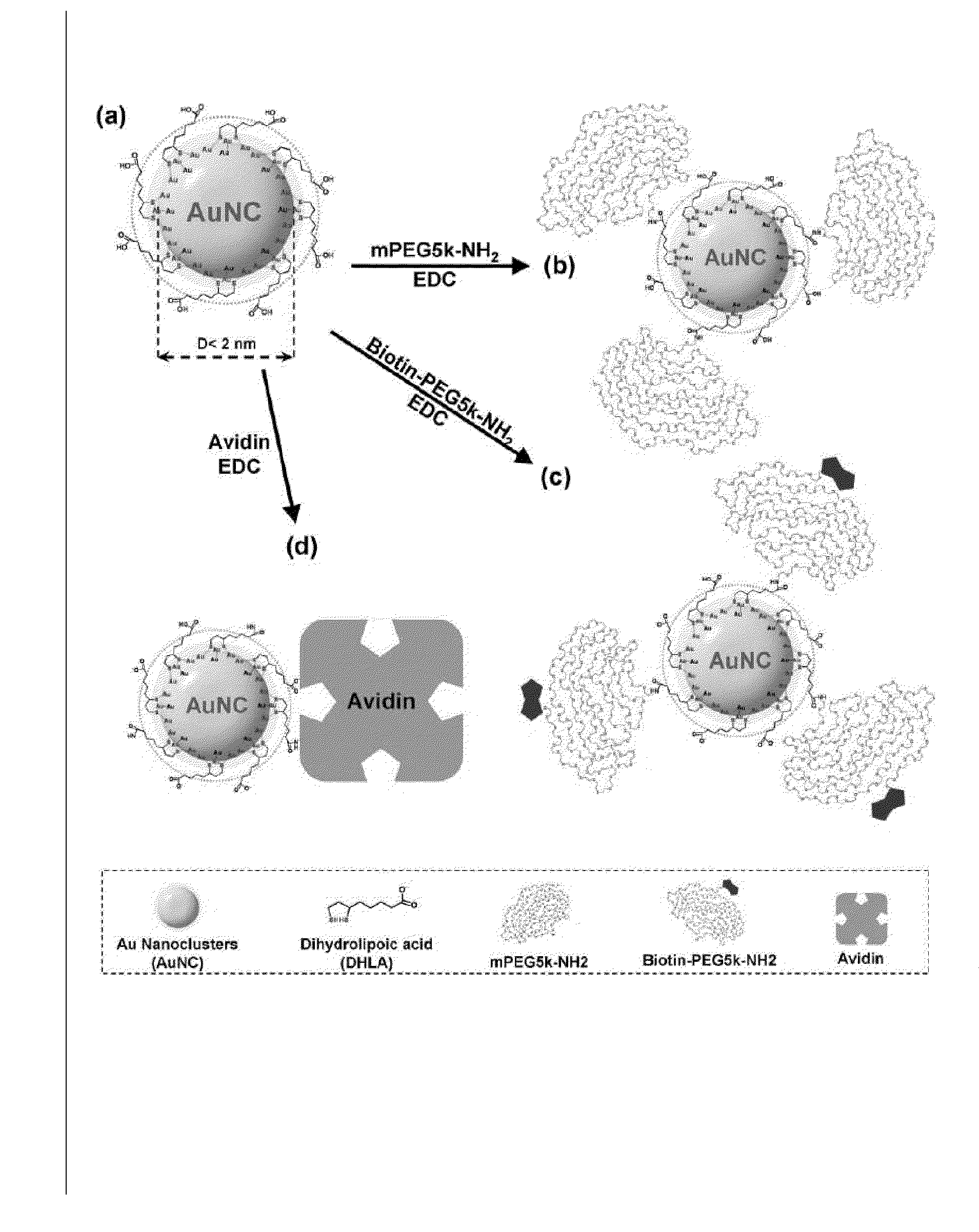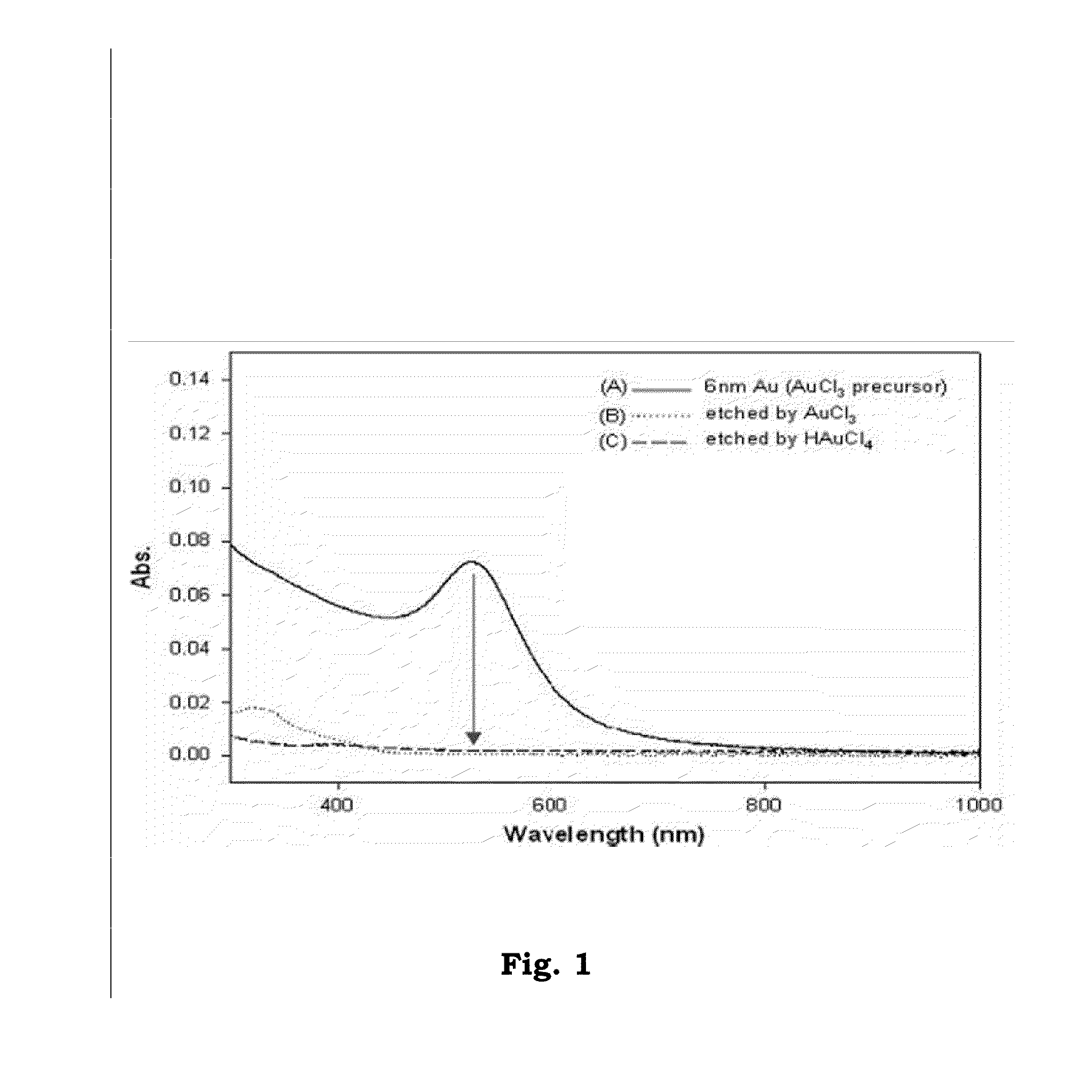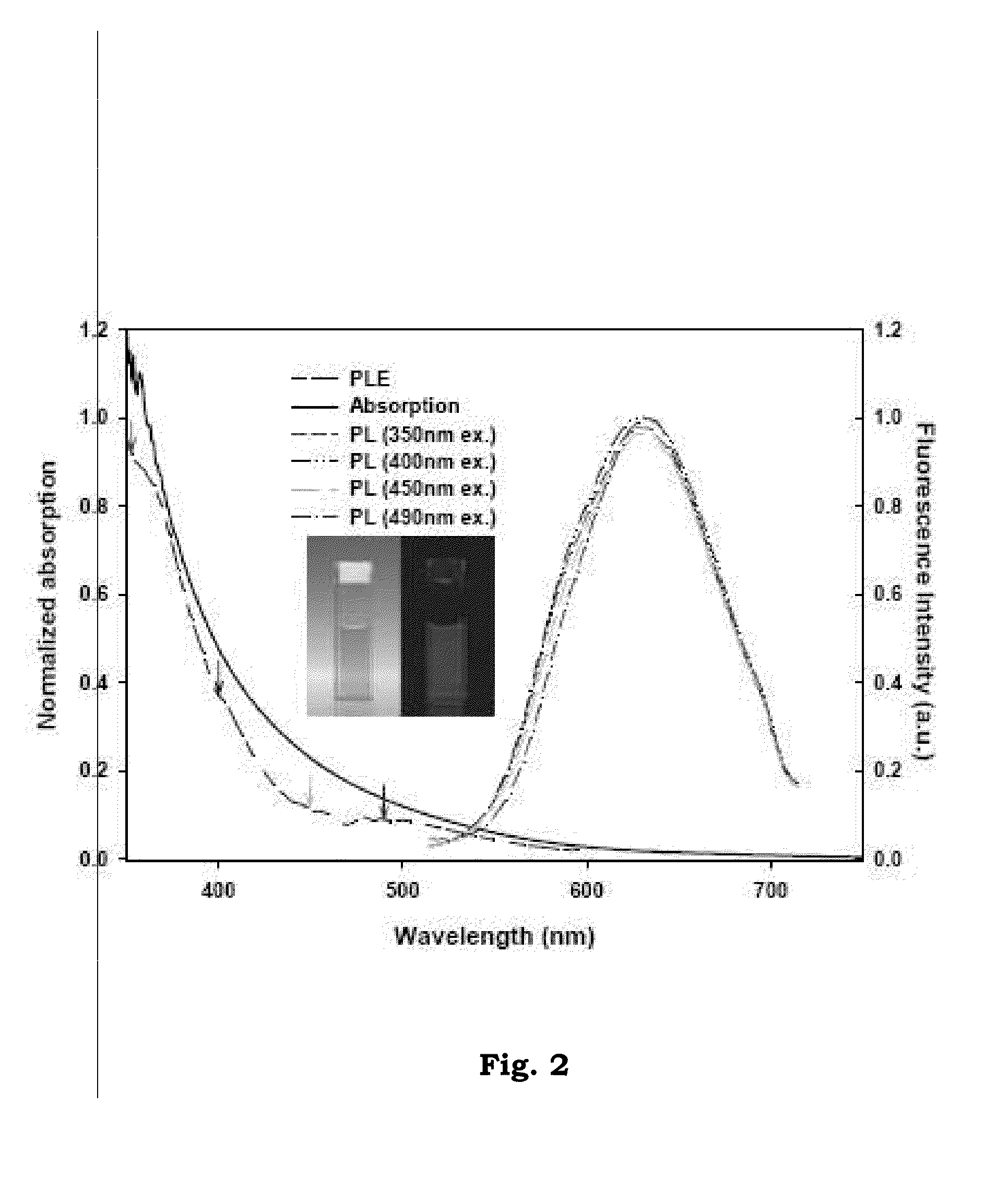Fluorescent Gold Nanocluster and Method for Forming the Same
a fluorescent gold nanocluster and nanocluster technology, applied in the field of gold nanoclusters, can solve the problems of toxic ions in semiconductor quantum dot probes, more flexibility being required of these dyes, and inability to meet the expectations of traditional dyes
- Summary
- Abstract
- Description
- Claims
- Application Information
AI Technical Summary
Benefits of technology
Problems solved by technology
Method used
Image
Examples
example 1
Fluorescent Gold Nanoclusters
(A) Synthesis of the Fluorescentgold Nanoclusters (AuNC@DHLA)
(I) Synthesis of Gold Nanocluster
[0040]Appropriate amounts of DDAB are dissolved in toluene to produce a stock solution with a concentration of 100 mM concentration. Then gold precursor solution (25 mM) is prepared by dissolving appropriate amounts of gold (III) chloride (AuCl3 or HAuBr4) in the DDAB solution. Then, 1 mL of fresh-prepared TBAB solution (100 mM in the DDAB stock solution) is mixed with 0.625 mL decanoic acid solution under vigorous stirring and 0.8 mL precursor solution such as gold (III) chloride solution is injected so as to form a dark-red solution of gold nanoparticles. The gold nanoparticles are collected by methanol-induced agglomeration, i.e. by adding excess methanol until obtaining a blue-purple cloudy solution. Free surfactants, reduction agents and other smaller nanoparticles are removed by discarding the supernatants of solution upon centrifugation (2500 rpm, 30 min)...
example 2
fluorescent Au Nanocluster Matrix
(A) Synthesis of the Fluorescent Gold Nanocluster Matrix
(I) Ligand Exchange to the Fluorescent Gold Nanocluster Matrix
[0045]Provide a gold nanoclusters solution formed by the method demonstrated in example 1 (I). The above-mentioned gold nanoclusters solution are dropped slowly into dodecanethiol (DDT) solution while stirring them for ligand exchange on the surface of the nanocluster. After the solution is stirred for an hour, the solution becomes a cloudy solution and the aggregation of fluorescent gold nanoclusters are formed.
(B) Bioconjugation for Fluorescent Gold Nanocluster Matrix
[0046]200 micro-liter of fluorescent gold nanoclusters solution and 200 micro-liter of galactose solution (80 mM in ddH2O) are mixed. Then, add 1-ethyl-3-(3-dimethylaminopropyl)carbodiimide (EDC, 30 mM in ddH2O) as a cross-linking agent, and provide a shacking process for two hours. Amide linkage is formed by EDC bounding at the amine of galactose so that galactose is g...
PUM
| Property | Measurement | Unit |
|---|---|---|
| particle diameter | aaaaa | aaaaa |
| particle diameter | aaaaa | aaaaa |
| wavelength | aaaaa | aaaaa |
Abstract
Description
Claims
Application Information
 Login to View More
Login to View More - R&D
- Intellectual Property
- Life Sciences
- Materials
- Tech Scout
- Unparalleled Data Quality
- Higher Quality Content
- 60% Fewer Hallucinations
Browse by: Latest US Patents, China's latest patents, Technical Efficacy Thesaurus, Application Domain, Technology Topic, Popular Technical Reports.
© 2025 PatSnap. All rights reserved.Legal|Privacy policy|Modern Slavery Act Transparency Statement|Sitemap|About US| Contact US: help@patsnap.com



